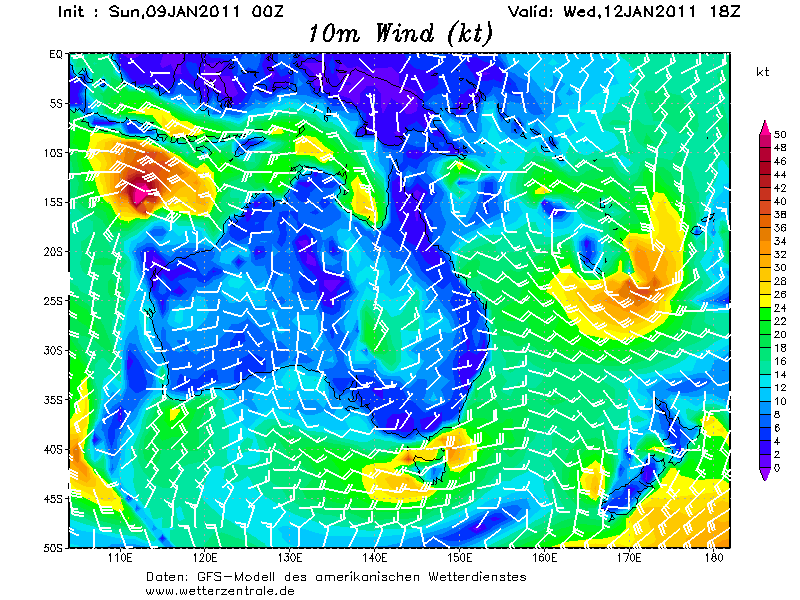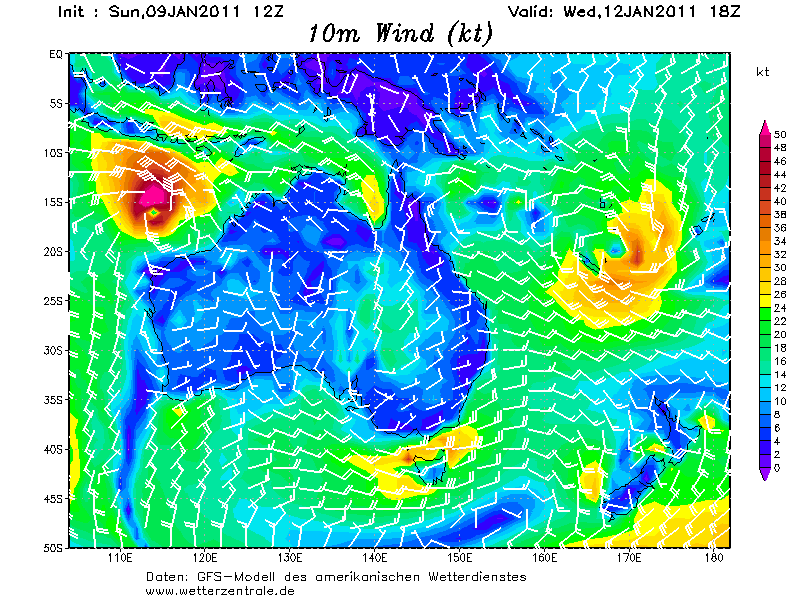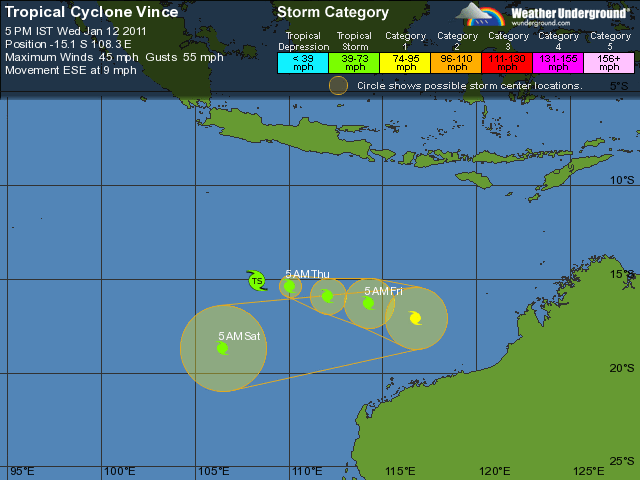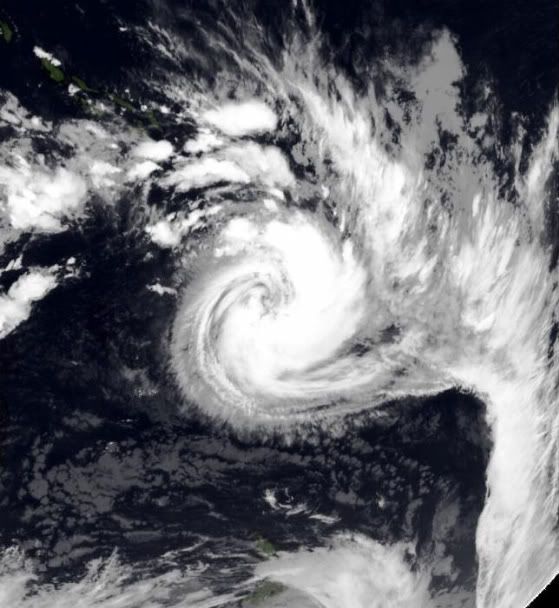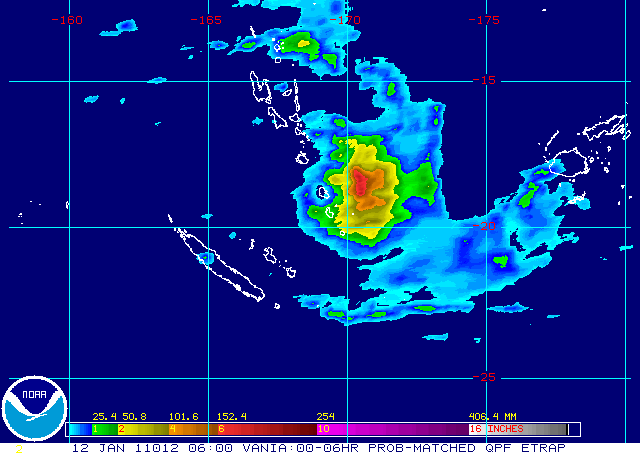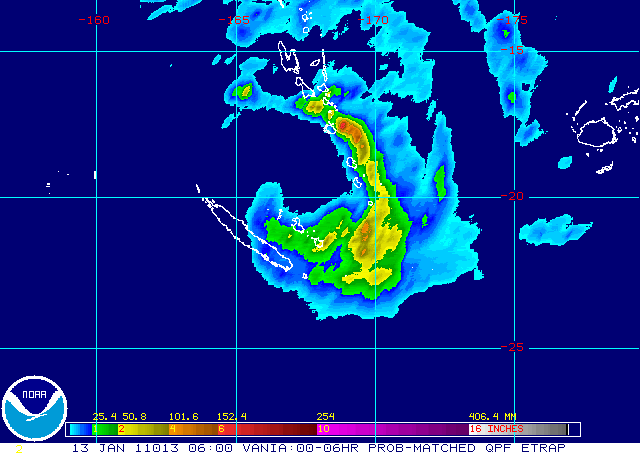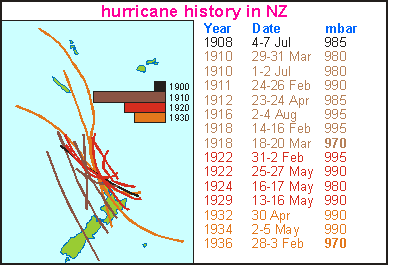WKN Weer, Klimaat en Natuurrampen
Lees alles over het onstuimige weer op onze planeet, volg orkanen en tornado's, zie hoe vulkanen uitbarsten en hoe Moeder Aarde beeft bij een aardbeving. Alles over de verwoestende kracht van onze planeet en tal van andere natuurverschijnselen.



Welkom! Hier alweer het volgende deel in de reeks Hurricane Season! Alle informatie over het ontstaan van nieuwe orkanen in 2011 vind je hier. En natuurlijk volgen we ze allemaal op de voet! Voor zowel Atlantische, Indische als Pacifische stormen kan je hier terecht
Algemene Info
Met de term 'Hurricane Season' bedoelden we in eerste instantie de periode van 1 juni tot 30 november. Deze periode wordt in de Atlantische Oceaan en de Golf van Mexico gezien als het orkaanseizoen. Echter komen deze gewelddadige stormen overal in de wereld voor en met name in Azië zorgen ze jaarlijks voor duizenden slachtoffers en tienduizenden daklozen. Echter horen we vaak erg weinig over de stormen in Azië en juist meer over die in de VS en de Caribbean.
In de laatste jaren zijn Tropische Stormen meer en meer in de media gekomen. Het lijkt ook alsof ze meer en meer slachtoffers maken. Een documentaire over Hurricane Andrew uit 1992, heeft diepe indruk gemaakt en ook zullen kenners orkanen Floyd, Gilbert, Stan en Ivan zich zeker nog herinneren. De catastrofe die "Katrina" met zich meebracht ging de hele wereld over. En dan praten we eigenlijk alleen over de Atlantische stormen en lijken we te vergeten dat er in 2007 meer dan 4000 doden vielen in Bangladesh door orkaan Sidr en orkaan Nargis zorgde voor 80.000 doden in Myanmar alleen al.
Hoewel het Atlantische seizoen pas officieel in juni begint zijn er op andere plekken in de wereld zeker meer orkanen te vinden in de komende maanden. We zullen ook deze dus zeker gaan bespreken. Waarschijnlijk zal de kern van de discussie en de posts gaan over de periode 1 juni tot 30 november. T.z.t. zal er ook wel een NWS-topic worden geopend als een orkaan ook uitgebreid in het nieuws komt.
Orkanen: Hoe ontstaan ze eigenlijk?
Op de site van Wikipedia kan je in het Nederlands nalezen hoe ze ontstaan en wat de belangrijkste energiebron is voor hun verwoestende kracht: het warme zeewater
Ook de BBC heeft er een interessante en leuke animatie over gemaakt.
Ook wordt er op LiveScience in het engels prima uitgelegd hoe ze ontstaan en zich ontwikkelen
Indeling, Kracht en Stormvloed
De stormen worden ingedeeld op 'categorie'. Vaak zijn het eerst tropische stormen" (Tropical Depression, Tropical Storms), die overgaan tot Orkaanstatus (Hurricanes/Tyfoons) Ze worden ingedeeld op windsnelheden via de Saffir-Simpson Schaal.
Door de enorme windkracht van een orkaan wordt het zeewater opgestuwd. Dit zeewater wordt als het ware vooruit geblazen, voor de storm uit. Hoe zwaarder de orkaan des te meer zeewater vooruit wordt geduwd. De stormvloed wordt dan ook gemeten bovenop de reguliere golfslag. Je kan het enigszins vergelijken met een muur van water (tsunami) die vooruit wordt geduwd.
Tropische Depressie: windsnelheden van 38 tot 61 km/u
Tropische Storm: windsnelheden van 62 tot 118 km/u
Orkaan 1e categorie: windsnelheden van 119 tot 153 km/u en een stormvloed van 1 tot 1,5 meter boven normaal
Orkaan 2e categorie: windsnelheden van 154 tot 177 km/u en een stormvloed van 1,5 tot 2,5 meter boven normaal
Orkaan 3e categorie: windsnelhden van 178 tot 209 km/u en een stormvloed van 2,5 tot 3,7 meter boven normaal
Orkaan 4e categorie: windsnelheden van 210-249 km/u en een stormvloed van 3,8 tot 5,5 meter boven normaal
Orkaan 5e categorie: windsnelheden > 250 km/u en een stormvloed van meer dan 5,5 meter boven normaal
Onderstaand schema geeft de kracht en benaming van orkanen overal ter wereld weer
TIP: Interactief (film)overzicht van de krachten van orkanen n.a.v. de schaal van Simpson
Waarom hebben orkanen namen?
De Tropische Depressies worden overal ter wereld in de gaten gehouden en zodra de depressies uitgroeien tot orkaan of cycloon, wordt er een naam aan de storm gegeven. Sinds 1950 krijgen ze namen op alfabetische volgorde (met uitzondering van de letters Q, U, X, Y en Z). Mocht een orkaan vernietigend hebben huisgehouden zoals Floyd, Gilbert en bijv. Katrina, dan zal die naam worden vervangen. Soms komt het ook voor dat alle letters van het alfabet gebruikt zijn in één seizoen (zoals 2005), dan zal een volgende storm Alpha gaan heten, gevolgd door Beta etc etc. Voor het orkanenseizoen 2010 zijn de namen als volgt:
Atlantische Stormen 2011
Arlene, Bret, Cindy, Don, Emily, Franklin, Gert, Harvey, Irene, Jose, Katia, Lee, Maria, Nate, Ophelia, Philippe, Rina, Sean, Tammy, Vince, Whitney
In het Noordoosten van de Pacific ontstaan ook orkanen. Deze orkanen zorgen vaak voor overlast in Midden-Amerika en delen van Mexico.
Oost Pacifische Stormen 2011
Adrian, Beatriz, Calvin, Dora, Eugene, Fernanda, Greg, Hilary, Irwin, Jova, Kenneth, Lidia, Max, Norma, Otis, Pilar, Ramon, Selma, Todd, Veronica, Wiley, Xina, York, Zelda
Verder zijn er dan nog de stormen in het Noordenwesten, Midden en Zuiden van de Pacific. Daar worden ze tyfoons en/of cyclonen genoemd. Vooral de stormen in het Noord/Westen komen vaak in het nieuws omdat ze Japan, de Filippijnen, Taiwan en China vaak teisteren, maar ook geheel Zuid Oost Azië kunnen treffen. Ook in de Indische oceaan komen ze voor, daar zijn vaak Bangladesh en Myanmar aan de beurt, maar soms ook India, Pakistan of zelfs Oman.
Meer informatie over de namen van orkanen vind je hier.
Leuk hoor allemaal, maar wanneer zijn die orkaanseizoenen nou precies?
ATLANTISCHE OCEAAN: 1 juni t/m 30 november
NOORD OOST PACIFIC:Begin mei t/m begin november, met piek in augustus/september
NOORD WEST PACIFIC: Begin juli t/m eind november, maar eigenlijk hele jaar door activiteit.
NOORD INDISCHE OCEAAN: april t/m december met pieken in mei en november
ZUID INDISCHE + WEST AUSTRALISCHE OCEAAN: oktober t/m mei met pieken in februari en april
ZUID WEST PACIFIC + OOST AUSTRALISCHE OCEAAN: oktober tot eind april met piek in februari.
Over het algemeen is Mei de rustigste maand en September de zwaarste.
En? Zijn er al verwachtingen en/of voorspellingen voor 2011?
Begin december kwamen de eerste voorspellingen voor 2011 naar buiten. Ze verwachten wederom een zeer actief seizoen. 50 jaar orkaangeschiedenis heeft een zogenaamd gemiddeld orkaanseizoen gecreëerd. Namelijk: 9,6 stormen met naam, 5,9 groeit uit tot orkaan en 2,3 worden superorkanen (cat 4 of 5) Volgens de december verwachting krijgen we 17 tropische stormen in de Atlantische Oceaan. Negen groeien daarvan uit tot orkaan en vijf daarvan zullen superorkanen worden. Er is een kans van 73% dat één van deze 5 superorkanen de kust van de VS zal gaan treffen. Deze voorspelling kan je hier nog eens nalezen.
Waait het nou echt zo hard bij zo'n orkaan?
Oude Delen
2004 - Deel 1 en Deel 2
2005 - Deel 1 en Deel 2
2006 - Deel 1 en Deel 2
2007 - Deel 1, Deel 2, Deel 3 en Deel 4
2008 - Deel 1 en Deel 2
2009 - Deel 1 en Deel 2
2010 - Deel 1 , Deel 2 . Deel 3 en Deel 4
Enkele Links
1. National Hurricane Centre
2. Carribean Storm Network
3. Hurricanezone
4. Hurricane Track
5. Website met satelietbeelden van de Caribbean en de rest van Amerika
6. Intellicast: Geavanceerde satellietfoto's en gifs van aktuele stormen
7. Tropical Weather Underground
8. Tropical Storm Risico's van dit moment
9. Wikipedia Hurricanes/Tyfonen in het algemeen
10. Alle stormen ter wereld van de laatste jaren in overzicht
11. The StormTrack
12. Orkanensite in de Filipijnen
13. Atlantische Orkanensite
14. Actuele orkanen in Australië en De orkaanindeling in Australië
15. Tropische weersite omgeving Australië
16. Mooie site over Orkanen aan de VS kusten
17. Website van NASA over Hurricanes
Opmerkelijke Wikipedia-Links
-- Hurricane Katrina 2005
-- Cyclone Nargis 2008
-- Hurricane Season 2011 - Wikipedia
-- Hurricane Season 2010 - Wikipedia
-- Hurricane Season 2009 - Wikipedia
-- Hurricane Season 2008 - Wikipedia
-- Hurricane Season 2007 - Wikipedia
-- Hurricane Season 2006 - Wikipedia
-- Hurricane Season 2005 - Wikipedia
-- Hurricane Season 2004 - Wikipedia
Actuele Weerradar in Golf van Mexico
Actuele Water temperatuur.
=====================
Heb je informatie over orkanen of wil je gewoon alle orkanen van 2011 volgen, volg dan dit topic
[ Bericht 0% gewijzigd door Frutsel op 15-02-2011 21:26:15 ]


Interessant... voor 2010 werd een boven gemiddeld orkaanseizoen voorspeld... toch leek dat eigenlijk niet zo, want de US werd zo goed als niet getroffen, maar toch waren er aardig wat stormen.
Voor 2011 voorspellen ze nu een zeer agressief orkaanseizoen
Voor 2011 voorspellen ze nu een zeer agressief orkaanseizoen
Lees hier meer over deze voorspellingquote:CSU and TSR predict an extremely active 2011 Atlantic hurricane season
A continuation of the pattern of much above-average Atlantic hurricane activity we've seen since 1995 is on tap for 2011, according to the latest seasonal forecast issued Wednesday by Dr. Phil Klotzbach and Dr. Bill Gray of Colorado State University (CSU). They are calling for 17 named storms, 9 hurricanes, and 5 intense hurricanes. An average season has 10 - 11 named storms, 6 hurricanes, and 2 intense hurricanes. The new forecast is a very aggressive one, since only six seasons since 1851 have had as many as 17 named storms; 19 seasons have had 9 or more hurricanes. The 2011 forecast calls for a much above-average chance of a major hurricane hitting the U.S., both along the East Coast (49% chance, 31% chance is average) and the Gulf Coast (48% chance, 30% chance is average). The Caribbean is forecast to have a 62% chance of seeing at least one major hurricane (42% is average.) Five years with similar pre-season November atmospheric and oceanic conditions were selected as "analogue" years that the 2011 hurricane season may resemble: 2008, 1999, 1989, 1961, and 1956. The average activity for these years was 12 named storms, 7 hurricanes, and 4 major hurricanes.
The forecasters cited several reasons for their forecast of a much above-average season:
1) Unusually warm sea surface temperatures continue in the tropical Atlantic this fall, an indication that the active hurricane period we have been in since 1995 will continue (in technical terms, the positive phase of the Atlantic Multidecadal Oscillation, AMO, will continue.) SSTs in Atlantic Main Development Region (MDR) for hurricanes, from the Caribbean eastwards to the coast of Africa, were at a record high in October (November data are not yet available.)
2) Hurricane activity in the Atlantic is lowest during El Niño years and highest during La Niña or neutral years. This occurs because El Niño events tend to increase westerly upper-level winds over the tropical Atlantic, bringing high wind shear harmful for hurricanes. The CSU team notes that we are currently experiencing moderate to strong La Niña conditions, with an unusual amount of cool water present in the top 300 meters of the Equatorial Pacific Ocean off the coast of South America. Since 1979, only eight years have had similar amounts of cool water in November. The hurricane seasons that followed each of those eight years were unable to transition to El Niño conditions. Thus, the CSU team expects that we will have neutral or La Niña conditions in place for the Atlantic hurricane season of 2011, which should act to keep wind shear values average to below average, enhancing hurricane activity. Of the 16 El Niño/La Niña computer models that made November predictions for the July-August-September 2011 portion of hurricane season (Figure 1), only 4 (25%) predicted that El Niño would arrive.
2011 Atlantic hurricane season forecast from Tropical Storm Risk, Inc.
The British private forecasting firm Tropical Storm Risk, Inc. (TSR), issued their 2011 Atlantic hurricane season forecast on Monday. They are also calling for a very active year: 15.6 named storms, 8.4 hurricanes, and 4 intense hurricanes. TSR predicts a 66% chance of an above-average hurricane season, 22% chance of a near-normal season, and only a 12% chance of a below normal season. TSR bases their December forecast on predictions that sea surface temperatures next fall in the tropical Atlantic will be above about 0.3°C above average, and trade wind speeds will be about 0.7 m/s slower than average. The trade wind speed prediction is based on a forecast for a weak La Niña in August-September 2011.
I like how TSR puts their skill level right next to the forecast numbers: 2% skill above chance at forecasting the number of named storms, 1% skill for hurricanes, and 7% skill for intense hurricanes. That's not much skill, and really, we have to wait until the June 1 forecasts by CSU, NOAA, and TSR to get a forecast with reasonable skill.


Met dank aan: Onweer-Onlinequote:Wederom een druk orkaanseizoen verwacht
Het Atlantisch orkaanseizoen van 2011 zal na verwachting net zo druk gaan verlopen als in 2010, dat hebben meteorologen van het Colorado State University bekend gemaakt. Er wordt verwacht, dat er 17 tropische stormen gaan ontstaan waarvan er negen zullen uit groeien tot orkaan. Vijf van de negen orkanen zullen uitgroeien tot "major hurricane" van categorie 3 of hoger, met windsnelheden van minstens 178 km per uur of hoger. Het Atlantisch orkaanseizoen loopt van 1 juni tot en met 30 november.
Vorig orkaanseizoen kwamen er 19 tropische stormen voor, waarvan er 12 uitgroeiden tot orkaan. Van deze twaalf orkanen kregen er vijf de status major hurricane. Het orkaanseizoen van 2010 staat op de derde plaats wat betreft de activiteit, alleen in de jaren 1887 en 1995 werden er meer stormen geregistreerd. In een gemiddeld orkaanseizoen brengt ongeveer elf stormen voort. Zes hiervan bereiken orkanen status. Twee orkanen groeien uit tot major hurricane in de Atlantische Oceaan, het Caribisch gebied en de Golf van Mexico.
Boven de Atlantische Oceaan, de Caribische Zee en de Golf van Mexico komen tijdens El Niño gemiddeld minder orkanen voor in tegenstelling tot de periode van La Niña, waarin er meer orkanen onstaan. Aan de westkust van Mexico en de Verenigde staten komen bij El Niño juist meer orkanen aan land. Men verwacht, dat het onwaarschijnlijk is, dat er een El Niño zich zal gaan ontwikkelen. Dit houdt in, dat er een actief orkaanseizoen aan zit te komen, aldus Philip Klotz, hoofd van Colorado State Universiteit.
Er is een grote mate van onzekerheid in de prognoses, maar meteorologen zijn nauwkeuriger geworden in het analyseren van grootschalige patronen en het voorspellen van een orkaanseizoen. Dit kan nuttig zijn voor het bedrijfsleven waaronder verzekeraars, boeren en energiemaatschappijen, die getroffen kunnen gaan worden door orkanen.
Op korte termijn zijn de weerpatronen bepalend, net zoals afgelopen jaar. Niemand voorzag, dat de droge lucht massa's en de straalstroom ervoor zorgden, dat de stormen en orkanen zich verwijderden van het vaste land van de Verenigde Staten. Vorig haar heeft geen enkele van de 12 gevormde orkanen de kust van de Verenigde Staten bereikt, waardoor de inwoners voor grote rampen bespaard zijn gebleven. Gemiddeld komt één op de vier orkanen aan land. Dit jaar verwachten de meteorologen, dat enkele orkanen wel het vaste land gaan bereiken.


Oh en voor als je niet weet wat ik bedoel:
quote:En natuurlijk volgen we ze allemaal op de voet! Voor zowel Atlantische, Indische als Pacifische stormen kan je hier terecht



Bij Australie worden er 6 verwacht dit seizoen.
bronquote:Zes cyclonen
De ellende is nog lang niet voorbij in Australië. In Queensland vrezen specialisten dat het stormseizoen nog een grote cycloon in petto heeft. Het seizoen duurt nog drie maanden en dus zou er nog veel neerslag uit de lucht kunnen vallen. Zeker tot woensdag zal het waterniveau blijven stijgen.
In november hadden weerkundigen een seizoen met zes cyclonen voorspeld


Ja dat zijn verwachtingen, maar blijkbaar kunnen ze dat ook al niet meer 
Doe mee met het voorspellen van het weer!
Weekvoorspelling | Week 50 (invullen tot 8-12 - 11:59)
Maandvoorspelling December(Gesloten)
Jaarvoorspelling 2024 / 2025
Weekvoorspelling | Week 50 (invullen tot 8-12 - 11:59)
Maandvoorspelling December(Gesloten)
Jaarvoorspelling 2024 / 2025


De storm zit ook in de nieuwe run van GFS. Ik heb er even een gifje van gemaakt.
Ook aan de oostkant van van Australie lijkt er een storm te ontstaan. Deze trekt niet richting land (niet richting Australie in ieder geval)
Ook aan de oostkant van van Australie lijkt er een storm te ontstaan. Deze trekt niet richting land (niet richting Australie in ieder geval)


Het systeem aan de westkant van Australie gaat woensdag uitgroeien tot een cycloon
quote:At 9am Monday another low was located near 15S 112E and was nearly stationary.
This low is currently in an unfavourable environment but conditions for
development are likely to improve by Wednesday.
Likelihood of this system being a tropical cyclone in the Western Region:
Tuesday :Low
Wednesday :High
Thursday :High


Als die nou eens voor NL bestemt was mag van mij de winter gestolen worden 
Doe mee met het voorspellen van het weer!
Weekvoorspelling | Week 50 (invullen tot 8-12 - 11:59)
Maandvoorspelling December(Gesloten)
Jaarvoorspelling 2024 / 2025
Weekvoorspelling | Week 50 (invullen tot 8-12 - 11:59)
Maandvoorspelling December(Gesloten)
Jaarvoorspelling 2024 / 2025


Het is nu nog een tropische depressie, maar zal in kracht toenemen en richting land trekken.
De orkaanschaal in Australie is net iets anders dan de schaal die we normaal gebruiken.
De orkaanschaal in Australie is net iets anders dan de schaal die we normaal gebruiken.


Of zal die nog meer ellende veroorzakenquote:Op dinsdag 11 januari 2011 16:29 schreef Frutsel het volgende:
Gaat die dan die bosbranden daar blussen?
Doe mee met het voorspellen van het weer!
Weekvoorspelling | Week 50 (invullen tot 8-12 - 11:59)
Maandvoorspelling December(Gesloten)
Jaarvoorspelling 2024 / 2025
Weekvoorspelling | Week 50 (invullen tot 8-12 - 11:59)
Maandvoorspelling December(Gesloten)
Jaarvoorspelling 2024 / 2025


quote:At 8am WST Tuesday a low [09U] was located near 14.9S 108.3E and was moving west
at 19 kilometres per hour. This low is likely to develop into a tropical
cyclone on Wednesday, by which time it will be tracking eastwards towards the
Pilbara coast. It is not expected to affect the coast on Wednesday or Thursday.
Likelihood of this system being a tropical cyclone in the Western Region:
Wednesday :High
Thursday :High
Friday :High


Het is allemaal weer lekker op dreef 
Misschien wordt het dit jaar toch een actief seizoen?
Misschien wordt het dit jaar toch een actief seizoen?
Doe mee met het voorspellen van het weer!
Weekvoorspelling | Week 50 (invullen tot 8-12 - 11:59)
Maandvoorspelling December(Gesloten)
Jaarvoorspelling 2024 / 2025
Weekvoorspelling | Week 50 (invullen tot 8-12 - 11:59)
Maandvoorspelling December(Gesloten)
Jaarvoorspelling 2024 / 2025


quote:Tropical Cyclone Vania may hit New Zealand
A tropical cyclone may be heading for New Zealand as a tropical depression continues to deepen.
According to WeatherWatch.co.nz, the tropical depression is currently lying over warm waters between Vanuatu and New Caledonia.
And the conditions are favourable for it to become a tropical cyclone, with New Caledonia likely to take a direct hit.
"A direct hit to New Zealand is not out of the question,” says head weather analyst Philip Duncan.
He says the storm may have an impact on the upper half of New Zealand.
"We still have no clear path on where this tropical storm will track but the North Island does look as though it will be in its sights.
"One model shows the low drifting across the North Island from the Taranaki region, while the other two models favour a Northland or East Cape strike.
“It's possible there's a fourth option where the low is pushed further east of the country, but either way it's something we should be aware of,” says Mr Duncan.
On the up side, Mr Duncan says heavy rain appears to be the main feature with this low, which may bring much needed water to dry parts of the North Island, but potentially a wet and windy time for campers in Northland and Coromandel Peninsula.
"The low is likely to start impacting New Zealand at the weekend. It's too early to be sure of its exact path so we advise people to keep up to date with WeatherWatch.co.nz news updates over the coming days.”
Mr Duncan says there is currently a moderate chance of New Zealand being impacted by the low.


VANIA gaat in kracht toenemen en zal waarschijnlijk als een categorie 1 Nieuw-Caledonië gaan treffen.


quote:WA operators on Cyclone alert
Tropical cyclone Vince is headed towards Australia's north-west coast, home to some of the country’s largest oil and gas facilities.
The weather bureau said the cyclone was currently 1050 km north-west of the town of Exmouth and is expected to move south-east for the next 48 hours and then curve back to the south-west, moving parallel to the coast.
Much of Australia's offshore oil and gas production, including the A$20 billion (US$19.742 billion) North West Shelf liquefied natural gas export project operated by Woodside , are located off the north-west coast.
Apache Energy is currently monitoring the cyclone movement, which may approach Apache facilities in the area over the next two to three days, but has taken no further action, Reuters reported.
Woodside said that it was preparing its facilities, but that there was currently no impact to production.
Woodside, Apache Energy, and BHP Billiton have all been forced to shut offshore operations as a precaution for brief periods since the beginning of the current cyclone season.
Cyclones off Australia's north-west annually force offshore oil and gas platforms to shut down temporarily.
Australia is facing almost double the usual number of destructive tropical cyclones, possibly as many as 22, during the current cyclone season, the weather bureau said in October.
The largest increase in cyclones is expected off the north-west, with 11-12 cyclones predicted, compared with an average of seven.


Het is nog niet helemaal duidelijk wat Vince gaat doen.
[ Bericht 22% gewijzigd door #ANONIEM op 12-01-2011 19:00:37 ]
[ Bericht 22% gewijzigd door #ANONIEM op 12-01-2011 19:00:37 ]


Vanuatu en Nieuw-Caledonië krijgen het flink te verduren. Vania gaat nog in kracht toenemen. De meeste neerslag zit nu boven Vanuatu (eilanden met als hoofdstad Port Vila (29.356 inwoners))
De cycloon trekt nu richting Nieuw-Caledonië (227.436 inwoners)
De cycloon trekt nu richting Nieuw-Caledonië (227.436 inwoners)


Eh, is de definitie van "een bovengemiddeld orkaanseizoen" dat de USA vaak getroffen dient te worden? Lijkt me niet.quote:Op donderdag 6 januari 2011 18:55 schreef Frutsel het volgende:
Interessant... voor 2010 werd een boven gemiddeld orkaanseizoen voorspeld... toch leek dat eigenlijk niet zo, want de US werd zo goed als niet getroffen, maar toch waren er aardig wat stormen.
Dat de USA afgelopen jaar niet vaak geraakt is komt door heersende windstromingen en niet doordat er weinig orkanen of stormen waren, imho.
NOAA noemt 2010 zelfs een extreem druk Atlantisch orkaanseizoen...


Daarom zeg ik ook "het leek van niet"... want we hebben er niet veel over gehoord in de media, juist omdat er nauwelijks landfall was.quote:Op woensdag 12 januari 2011 19:57 schreef cynicus het volgende:
[..]
Eh, is de definitie van "een bovengemiddeld orkaanseizoen" dat de USA vaak getroffen dient te worden? Lijkt me niet.
Dat de USA afgelopen jaar niet vaak geraakt is komt door heersende windstromingen en niet doordat er weinig orkanen of stormen waren, imho.
NOAA noemt 2010 zelfs een extreem druk Atlantisch orkaanseizoen...
Daarbij komt dat er wel bovengemiddelde verwachtingen waren, dus ook voor eventuele landfall in de VS of de Carribean.


Tropical Cyclones in Indian, South Pacific Oceans
Two tropical cyclones are churning the tropical waters of the Southern Hemisphere as of Wednesday.
Tropical Cyclone Vania has spun up near the South Pacific island nation of Vanuatu. The center was within 125 miles, or 200 km, of Port-Vila, Vanuatu.
Having highest sustained winds of 50 mph, Vania was nearly stationary with a sluggish drift towards the southwest.
Cyclone Vania on Jan. 12, 2011. (Navy Research Lab Monterey).
Vania's greatest threat, rather than Vanuatu, is to the island of New Caledonia, which it could strike directly with hurricane gusts and flooding rain as early as Friday.
Meanwhile, far to the west, Tropical Cyclone Vince whirls over open seas well off northwestern Australia.
The location of Vince is about 750 miles, or 1200 km, west-northwest of Port Hedland, Australia.
Cyclone Vince on Jan 12, 2011 (Navy Research Lab Monterey).
Vince holds highest sustained winds of 45 mph, and the storm is tracking a little south of east at 8 mph.
Warm waters will help to promote strengthening of this tropical cyclone as it heads towards the east through Friday. Thereafter, movement is less certain and could shift substantially.
Much of the northwest coast of Australia is sparsely settled. However, there are important mineral loadings sites and off-shore petroleum production sites that could be adversely affected by a tropical cyclone.
Bron: Accuweather
[ Bericht 1% gewijzigd door #ANONIEM op 12-01-2011 22:16:01 ]
Two tropical cyclones are churning the tropical waters of the Southern Hemisphere as of Wednesday.
Tropical Cyclone Vania has spun up near the South Pacific island nation of Vanuatu. The center was within 125 miles, or 200 km, of Port-Vila, Vanuatu.
Having highest sustained winds of 50 mph, Vania was nearly stationary with a sluggish drift towards the southwest.
Cyclone Vania on Jan. 12, 2011. (Navy Research Lab Monterey).
Vania's greatest threat, rather than Vanuatu, is to the island of New Caledonia, which it could strike directly with hurricane gusts and flooding rain as early as Friday.
Meanwhile, far to the west, Tropical Cyclone Vince whirls over open seas well off northwestern Australia.
The location of Vince is about 750 miles, or 1200 km, west-northwest of Port Hedland, Australia.
Cyclone Vince on Jan 12, 2011 (Navy Research Lab Monterey).
Vince holds highest sustained winds of 45 mph, and the storm is tracking a little south of east at 8 mph.
Warm waters will help to promote strengthening of this tropical cyclone as it heads towards the east through Friday. Thereafter, movement is less certain and could shift substantially.
Much of the northwest coast of Australia is sparsely settled. However, there are important mineral loadings sites and off-shore petroleum production sites that could be adversely affected by a tropical cyclone.
Bron: Accuweather
[ Bericht 1% gewijzigd door #ANONIEM op 12-01-2011 22:16:01 ]


quote:New Caledonia on cyclone alert
New Caledonia's Loyalty Islands were on maximum alert for Cyclone Vania after it brought gale-force winds to Vanuatu.
The New Caledonian domestic airline grounded all flights until further notice.
The category 2 storm damaged food crops and small buildings in Vanuatu.
The weather bureau said it received widespread reports of low-level damage but communication with some islands, including Tanna, was cut after a phone tower was blown over.
New Caledonian officials say it could bring winds of up to 110 kilometres an hour to the Loyalty Islands and to the main island later.
Low-lying areas have been evacuated, businesses and schools are closed, and residents have been warned to take shelter and avoid coastal areas.


Ten oosten van Australie is ook weer een tropische depressie aktief
quote:SITUATION
At 1200 UTC a Tropical Low was centred within 60 nautical miles of
latitude thirteen decimal five south (13.5S)
longitude one hundred and forty nine decimal six east (149.6E)
Recent movement : north northwest at 6 knots
Maximum winds : 30 knots
Central pressure: 997 hPa
The low may develop into a tropical cyclone during the next 24 hours.
AREA AFFECTED
Within 60 nautical miles of the centre.
FORECAST
Clockwise winds 15/25 knots, increasing to 25/35 knots over the northern half.
Very rough seas developing.
Forecast positions
At 0000 UTC 14 January: Within 150 nautical miles of 13.2 south 150.8 east
Central pressure 995 hPa.
Winds to 35 knots near centre.
At 1200 UTC 14 January: Within 180 nautical miles of 14.4 south 152.1 east
Central pressure 989 hPa.
Winds to 40 knots near centre.


Vania is nog een tropische storm met een windsnelheid van 109 km/uur.
Neerslag komt op sommige plaatsen boven de 150 mm
Neerslag komt op sommige plaatsen boven de 150 mm


Orkanen over Nieuw Zeeland, "Gebeurd zoiets wel eens?" vroeg ik me af. En toen vond ik dit artikel uit 1892.
En een historisch lijstje (interessante link trouwens):
Maar goed, er kan nog zoveel gebeuren voordat die storm/orkaan daar is.
En een historisch lijstje (interessante link trouwens):
Maar goed, er kan nog zoveel gebeuren voordat die storm/orkaan daar is.


Ik verwacht geen orkaan voor Nieuw Zeeland. Dat ligt veel te zuidelijk. Zal waarschijnlijk bij een tropische storm/depressie blijven. Wat natuurlijk ook voor veel overlast kan gaan zorgen.


Op weg naar Nieuw Zeeland. Watertemperatuur ligt hier net onder de 22 graden.
Nieuw Caledonie komt ook weer dicht in de buurt voor deze cycloon.
[ Bericht 14% gewijzigd door #ANONIEM op 14-01-2011 19:16:09 ]
Nieuw Caledonie komt ook weer dicht in de buurt voor deze cycloon.
[ Bericht 14% gewijzigd door #ANONIEM op 14-01-2011 19:16:09 ]


Zelia is nu een categorie2 orkaan met een windsnelheid van 168 km/uur en windstoten tot 201 km/uur. Dinsdag nadert deze Nieuw Zeeland. Zelia zal dan afgezwakt zijn tot tropische storm.


ABC Newsquote:Norfolk Island spared cyclone's wrath
Norfolk Island has been spared the full force of Tropical Cyclone Zelia, which is now moving to the east of the island.
Earlier, it was predicted to move directly across the island but it is currently about 60 kilometres to the north-east and is rapidly moving further off shore.
The weather bureau says it has been downgraded to a category two cyclone and is unlikely to cause any significant damage.
The bureau says winds could reach gale force in the next few hours and seas could rise up to seven metres.


Anthony gaat rechtsomkeer maken en lijkt (volgens GFS) over een aantal dagen aan land te gaan in het noorden van Queensland. Wat voor nieuwe overstromingen kan gaan zorgen.
Wilma ligt nu boven de Samoa eilanden en zal koers zetten richting de Tonga eilanden.
[ Bericht 9% gewijzigd door #ANONIEM op 23-01-2011 14:08:54 ]
Wilma ligt nu boven de Samoa eilanden en zal koers zetten richting de Tonga eilanden.
[ Bericht 9% gewijzigd door #ANONIEM op 23-01-2011 14:08:54 ]


quote:Existing Cyclones in the Eastern Region:
Tropical Cyclone Anthony is moving east in the northern Coral Sea and slowly
strengthening. Likelihood of TC Anthony remaining a tropical cyclone in Eastern
Region on:
Monday: High
Tuesday: High
Wednesday: High
quote:Potential Cyclones:
At 8am WST a tropical low was located just off the Kimberley coast near latitude
14.3S longitude 128.8E, about 75 kilometres west of Port Keats, moving north at
6 kilometres per hour. The low is expected to move in a generally westwards
direction and be in the Western region [west of 125E] just off the Kimberley
coast on Tuesday. During the week the low is expected to move towards the
southwest parallel to the Pilbara coast. The low may develop into a tropical
cyclone late on Tuesday or more likely on Wednesday.
Likelihood of this system being a tropical cyclone in the Western Region:
Monday :Low
Tuesday :Moderate
Wednesday :High
[ Bericht 52% gewijzigd door #ANONIEM op 23-01-2011 16:02:35 ]


en volgens dat plaatje wordt het wel iets meer dan een Cat 1quote:Op zondag 23 januari 2011 13:31 schreef aloa het volgende:
Anthony gaat rechtsomkeer maken en lijkt (volgens GFS) over een aantal dagen aan land te gaan in het noorden van Queensland. Wat voor nieuwe overstromingen kan gaan zorgen.
[ afbeelding ]
Wilma ligt nu boven de Samoa eilanden en zal koers zetten richting de Tonga eilanden.
[ afbeelding ]
[ afbeelding ]









